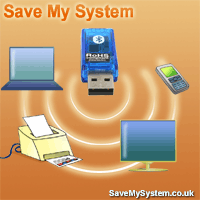Leading to the rise of the satellite radio's popularity is the fact that it offers a better sound quality than terrestrial radio broadcasts. There are distinct advantages to satellite radio even though the content may not include everything you would like to hear.
Satellite radio uses satellites to deliver radio programs to subscribers. The radio signal is broadcast from Earth based stations to communicational satellites, which then redirect the signal to satellite radio receivers. The radio signal is broadcast to a much larger area than traditional terrestrial radio antennas.
The sound quality of satellite radio is comparable to that of a CD. Even though a satellite radio, like cable TV, has to be paid for, it can be considered as a worthwhile expense because it is affordable enough. Switching to satellite radio is what many people have done mainly because of the superior broadcast quality.
There are no sound interferences, hissing, or other disturbances in a satellite radio because it is digital. The sound on satellite radio is crystal clear, and for bass lovers, the stronger accurate bass will be appreciated. According to most satellite radio subscribers, the quality is extremely close to that of a CD and it is coupled with more robust and mid range sounds as well as crystal clear high range sounds. Satellite radio is also not susceptible to sound problems caused by poor weather.
The content is the second factor that converts people to satellite radio. The major players in satellite radio sought exclusivity for some transmissions even though originally considered quite extraordinary and these elevated them above analog radio stations that often share content such as sports broadcasts. More than 100 programs that vary in content from jazz, rock, rap, as well as classical music is what satellite radio services provides its subscribers. With satellite radio, exclusive sports programs, educational and cultural shows, news and talk-shows are also being offered.
When it comes to satellite radio, another benefit it offers is that there are only a few of their channels that retransmit terrestrial programming. The best part is that satellite radio has no advertising and most of their music channels are created in house. Many subscribers find this lack of interruption from endless commercials appealing.
You will need to buy a receiver and subscribe to one of the satellite radio broadcasts in order to get satellite radio at home or in the car. Monthly subscriptions are usually under $20 a month while receivers can usually cost about $300-$500. Subscribers would be expecting a certain level of content as well broadcast quality even though this is not out of reach for many. Many feel that paying for a radio service means the broadcasters will be more likely to maintain and improve those standards than terrestrial radio stations. After all, wouldn't most people prefer to pay a little for a better service?
Satellite radio uses satellites to deliver radio programs to subscribers. The radio signal is broadcast from Earth based stations to communicational satellites, which then redirect the signal to satellite radio receivers. The radio signal is broadcast to a much larger area than traditional terrestrial radio antennas.
The sound quality of satellite radio is comparable to that of a CD. Even though a satellite radio, like cable TV, has to be paid for, it can be considered as a worthwhile expense because it is affordable enough. Switching to satellite radio is what many people have done mainly because of the superior broadcast quality.
There are no sound interferences, hissing, or other disturbances in a satellite radio because it is digital. The sound on satellite radio is crystal clear, and for bass lovers, the stronger accurate bass will be appreciated. According to most satellite radio subscribers, the quality is extremely close to that of a CD and it is coupled with more robust and mid range sounds as well as crystal clear high range sounds. Satellite radio is also not susceptible to sound problems caused by poor weather.
The content is the second factor that converts people to satellite radio. The major players in satellite radio sought exclusivity for some transmissions even though originally considered quite extraordinary and these elevated them above analog radio stations that often share content such as sports broadcasts. More than 100 programs that vary in content from jazz, rock, rap, as well as classical music is what satellite radio services provides its subscribers. With satellite radio, exclusive sports programs, educational and cultural shows, news and talk-shows are also being offered.
When it comes to satellite radio, another benefit it offers is that there are only a few of their channels that retransmit terrestrial programming. The best part is that satellite radio has no advertising and most of their music channels are created in house. Many subscribers find this lack of interruption from endless commercials appealing.
You will need to buy a receiver and subscribe to one of the satellite radio broadcasts in order to get satellite radio at home or in the car. Monthly subscriptions are usually under $20 a month while receivers can usually cost about $300-$500. Subscribers would be expecting a certain level of content as well broadcast quality even though this is not out of reach for many. Many feel that paying for a radio service means the broadcasters will be more likely to maintain and improve those standards than terrestrial radio stations. After all, wouldn't most people prefer to pay a little for a better service?
About the Author:
Whether you plan an extended holiday or quick getaway, travel insurance should be the first thing on your to-do list.

No comments:
Post a Comment